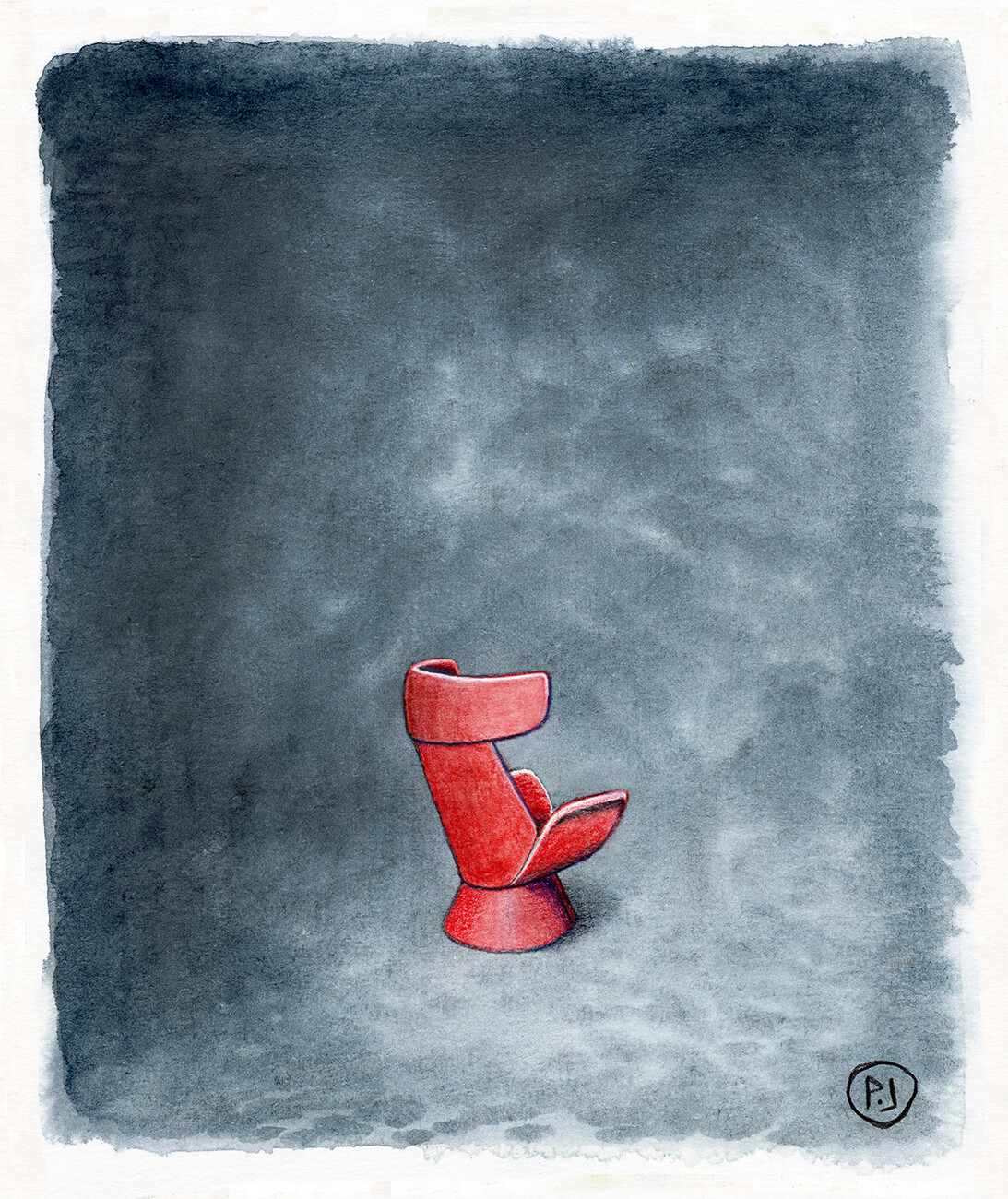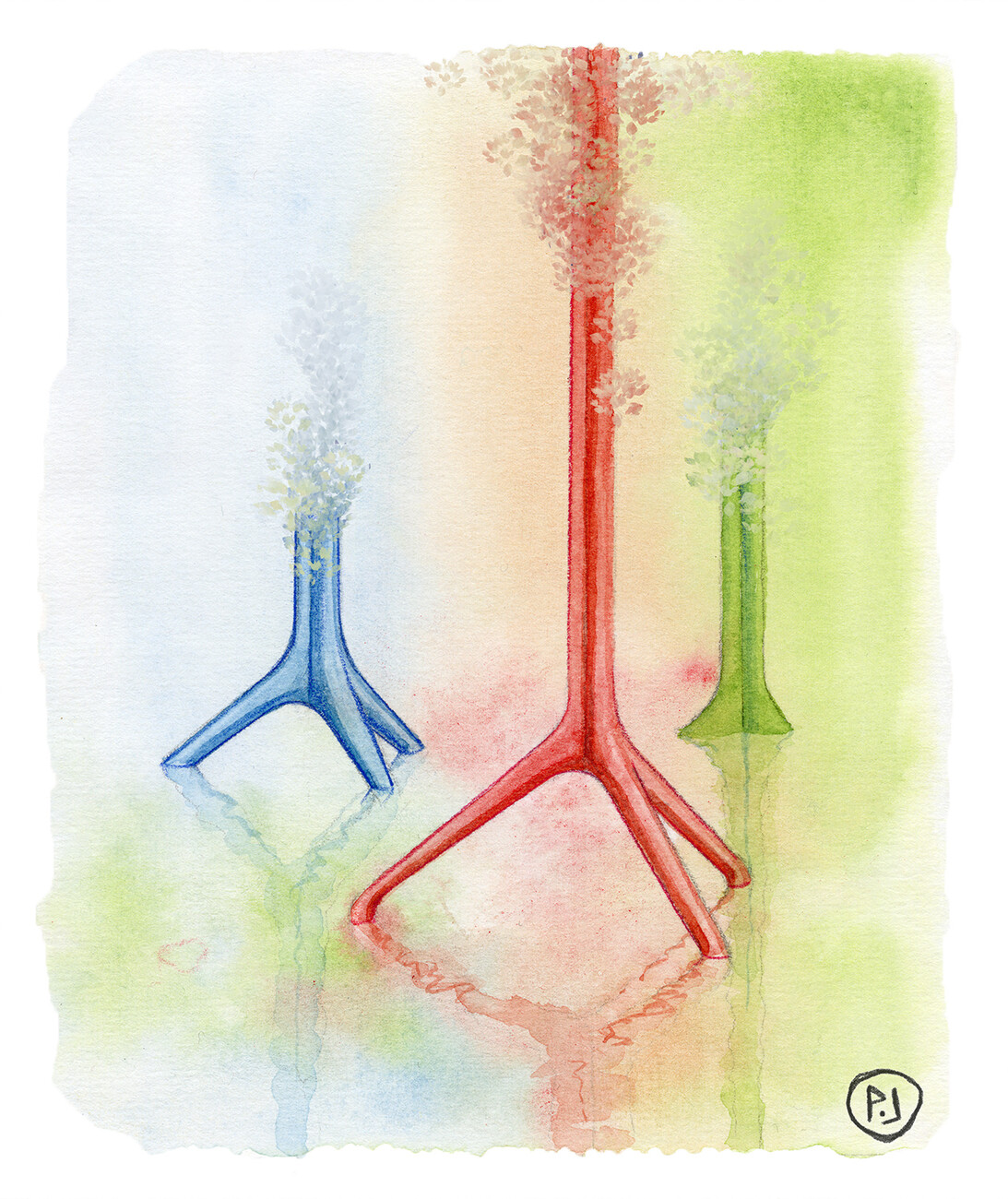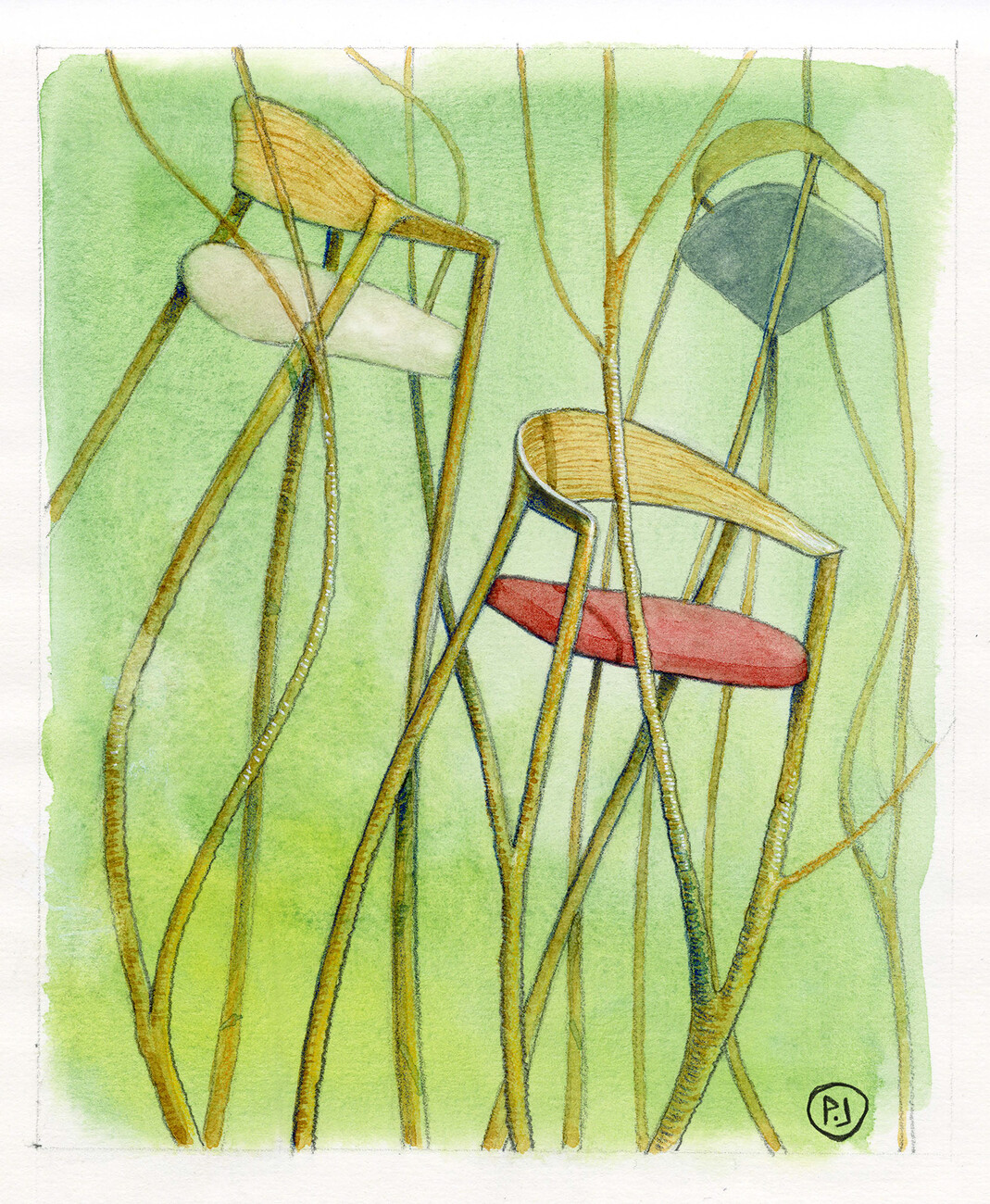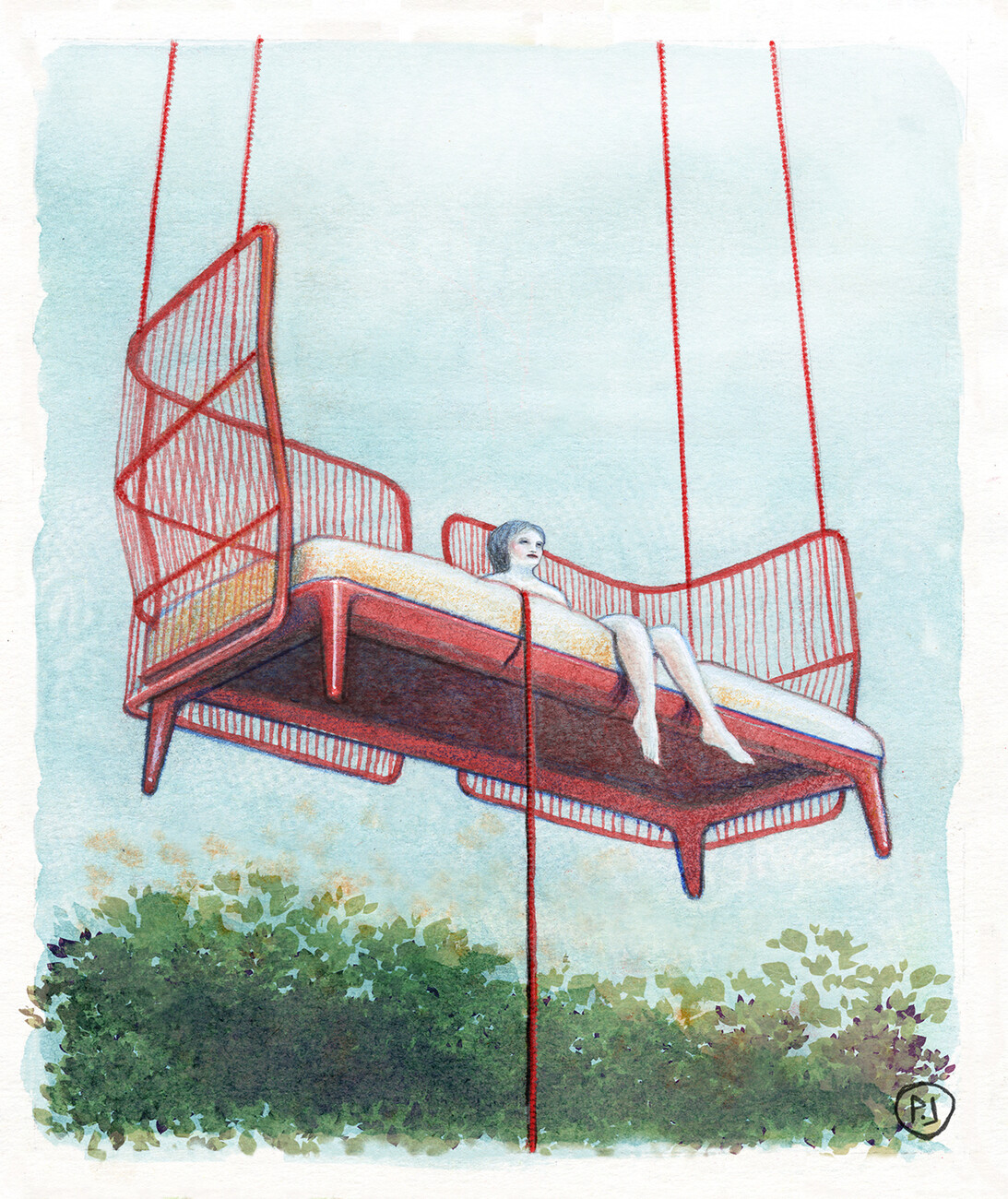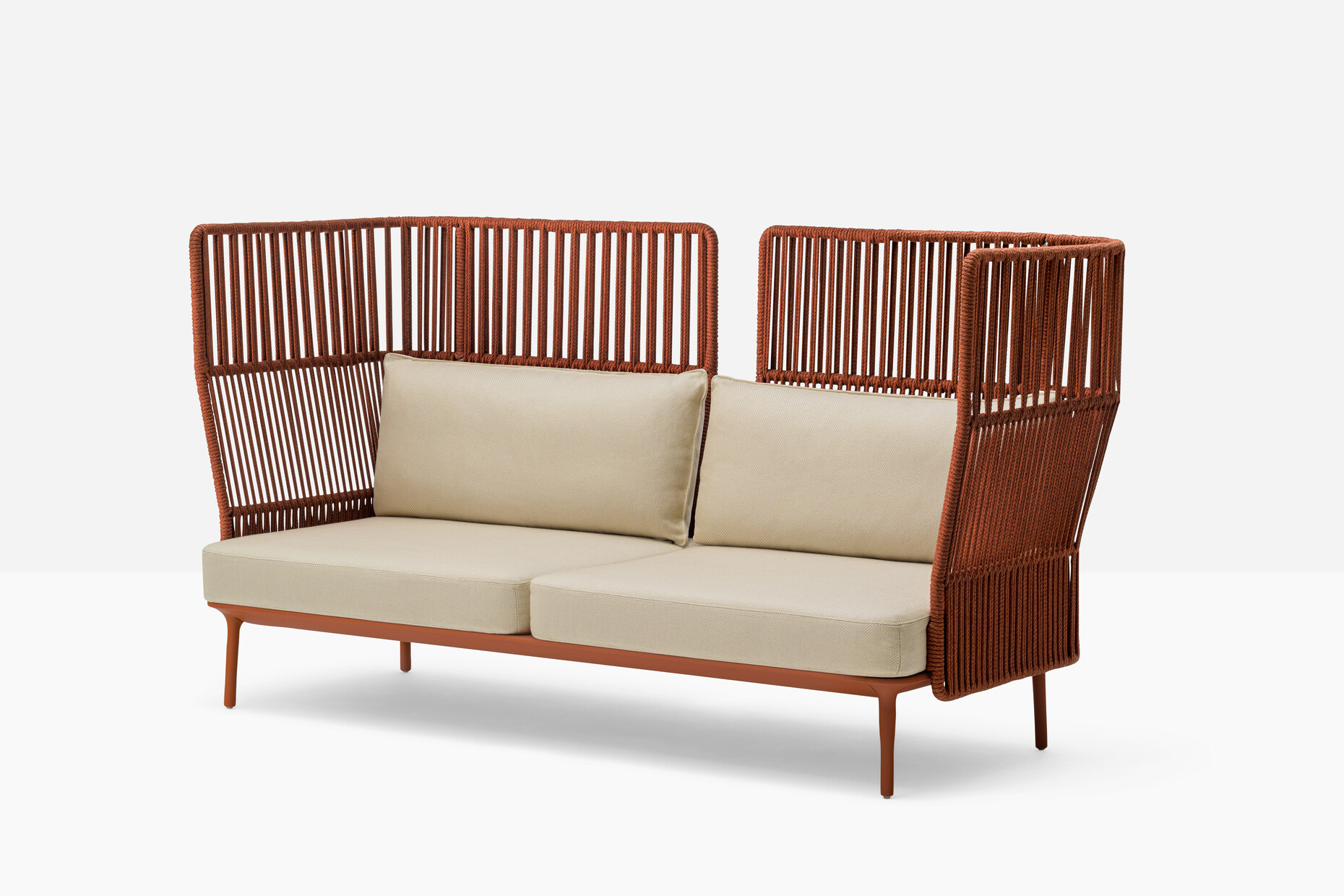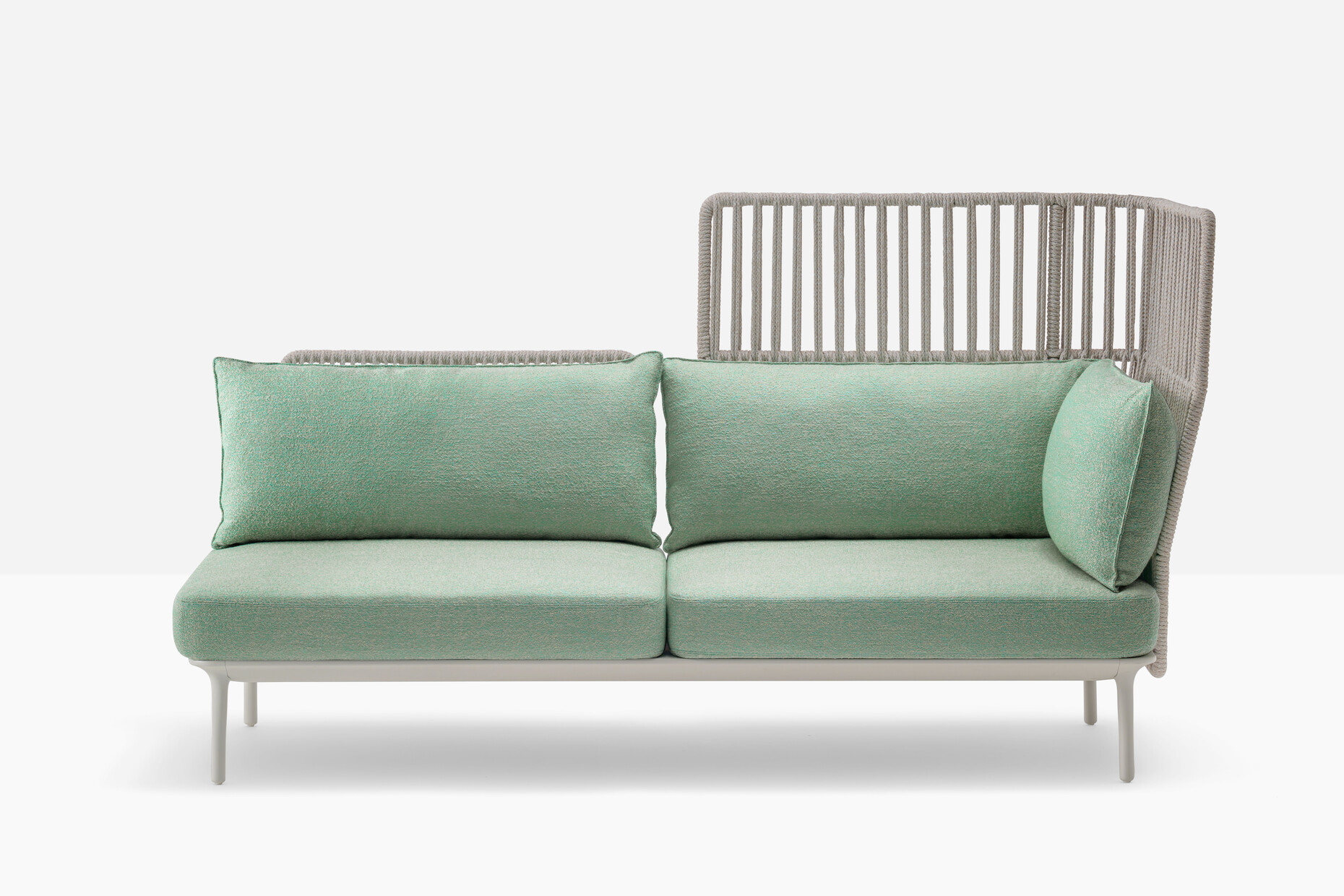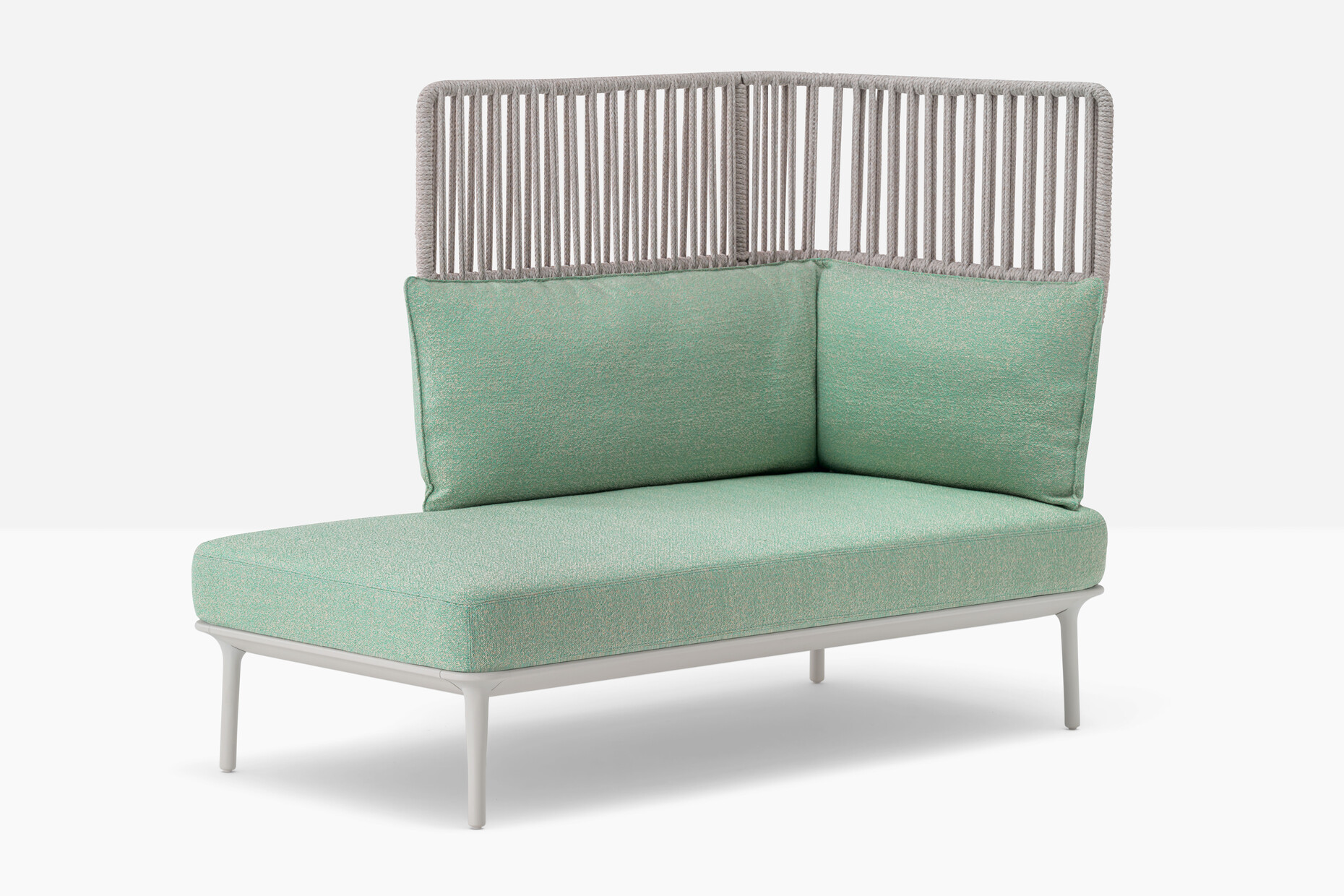Featured
Create a balance
Patrick Jouin: With my team, I design quite a lot for restaurants and have been working on projects together with the French chef Alain Ducasse for more than 20 years. We were looking for an idea for a restaurant in Dorchester, from which I later derived the name "Ester" for the chair. During the conversation, Alain mentioned Pedrali as a possible manufacturer. He said, "Would you like to meet them and try to reinvent the chair?" And I said, "Of course!" (laughs) So I went to Bergamo and talked to Giuseppe Pedrali about the idea. Meanwhile, I started sketching to capture the thoughts. For me, drawing is like second nature, it's part of the conversation. After two hours we had the final furniture down on paper. Giuseppe also immediately had an idea of the technology we would need for it and the production quickly started.
You recently developed the "Reva Cocoon" and "Héra Lounge" collections for Pedrali, what was the idea here?
Patrick Jouin: There was something about "Héra" that gave us the impression that its story wasn't finished with an armchair. That it needed other elements, like a lounge armchair or a stool. We also wanted to give "Héra" a more casual character that would work in living rooms as well as hotels. The furniture should symbolise the joy of being together and offer fantastic comfort. "Héra Lounge's" elegant structure is made of curved ash wood, the seat of polyurethane foam is supported by elastic belts. With "Reva Cocoon", on the other hand, we have designed a sofa for outdoor use that offer many possibilities for individual configuration. Stainless steel and aluminium are the basis for an artful wickerwork structure made of weather-resistant polypropylene, which is completely manufactured in Italy. We have selected a waterproof lining and outdoor fabrics for the pouf cushions. As with all designs for Pedrali, it's all about high quality and maximum utility.
What is important to you when working with a manufacturer like Pedrali?
Patrick Jouin: The starting point is always the company's wish for me to design for them as a creative person. It's about developing a relationship with each other, a respectful basis that you can build on over time with each new design. The relationship with Pedrali is one of friendship, we trust each other. That is the core of our joint success.
Your designs show mainly soft, flowing forms – in addition there is a twist in each case that makes the design special and makes the viewer feel curious. What do you want to achieve with your designs?
Patrick Jouin: Basically, I want to achieve two things at the same time – invent a new form and create a balance in the conditions, such as in terms of weight or price. The product should not only be aesthetically pleasing, but it must also serve a purpose, be beautiful and essential in one. It should also contribute to a sense of well-being, that is important. It is not easy to get to the heart of all this in a design, because the scope for creating something new that has never existed before has become very small. My task is to achieve that. The process is basically similar to composing a song. I produce the prototypes by hand with my team, because they are the only way to really explore all the design possibilities. The products for Pedrali should also have a character that can work for the furnishing of an entire restaurant. It's about elegance, not about attracting attention. The soft tones are often more difficult to design than the loud ones.
Pedrali has been a very sustainable company since its beginning. Based on objective data, the company sets targets for continuous optimisation, which means full support for the agenda promoted by the United Nations. To what extent is sustainable design important to you?
Patrick Jouin: I was born in 1967, at a time when consumers and designers alike were crazy about plastic products. Fast, thoughtless consumption was part of the culture back then. My father was a mechanical engineer and worked for the industry, so I grew up in parallel with the technology around the processing of plastic. While plastic is an amazing invention, it also has a terrible side for the environment. As designers and architects we have a great responsibility, which we are more aware of today than we were then. Today I wouldn't design furniture out of synthetics. Creative people have to change their way of working according to the demands of the time. This applies not only to the material, but also to the form: With "Héra", for example, we decided to make the chair legs straight. This makes them lighter and we need less wood, hardly losing any material when cutting. By contrast, complex shapes produce more waste. We also made the backrest as lightweight as possible, try to create objects that do not impose any new constraints. And these new guidelines in design also create a new aesthetic in parallel. As designers, we are right in the middle of the society and part of the processes around consumption. We are part of the problem and have to try to develop products that contribute to the balance, that are meaningful.
Not only would I say that designers are part of the problem, they also provide the basis for a holistic sustainable design. Their specifications in terms of shape, colour and material influence the whole process.
Patrick Jouin: That's right, and so it is important to me to emphasise the beauty of the natural material with the chosen form, to ideally convey the special nature of solid wood. Equally important is Pedrali's parallel commitment to environmental sustainability. The wooden elements of Héra lounge are FSC® C114358 certified and painted with water-based coatings.
There is a quote on Pedrali's website from you that I think fits well in this context: "as designers, we must be insolent in the face of adversity. it is not the time to churn out poems, but if we did, we would need to be effective poets". Can you explain this idea a little more?
Patrick Jouin: For me as a designer, the ultimate goal is not just to design a chair, but to touch people with my design, to be connected to them through the design, even though I will never meet in person. I think it's similar with artists or musicians. We want to create emotions with our work. For me, the best side of human beings is their will to give their creation a greater meaning. So I hope that my design helps to give a positive moment to the individual who uses it. Our history, our cultures are in the objects we have made over the centuries. Those pieces are a kind of detachment from ourselves. I don't think it takes much to understand that there is something bigger behind a design, to feel that an object is good, both for the environment and for yourself. I am a big admirer of Dieter Rams and always have his ten theses for good design in my head when I work on my projects. I try to stick to these and at the same time add my own language of composition, as with the furniture for Pedrali. The balance of meeting the guidelines in terms of sustainability and my own signature is what defines my practice today.

